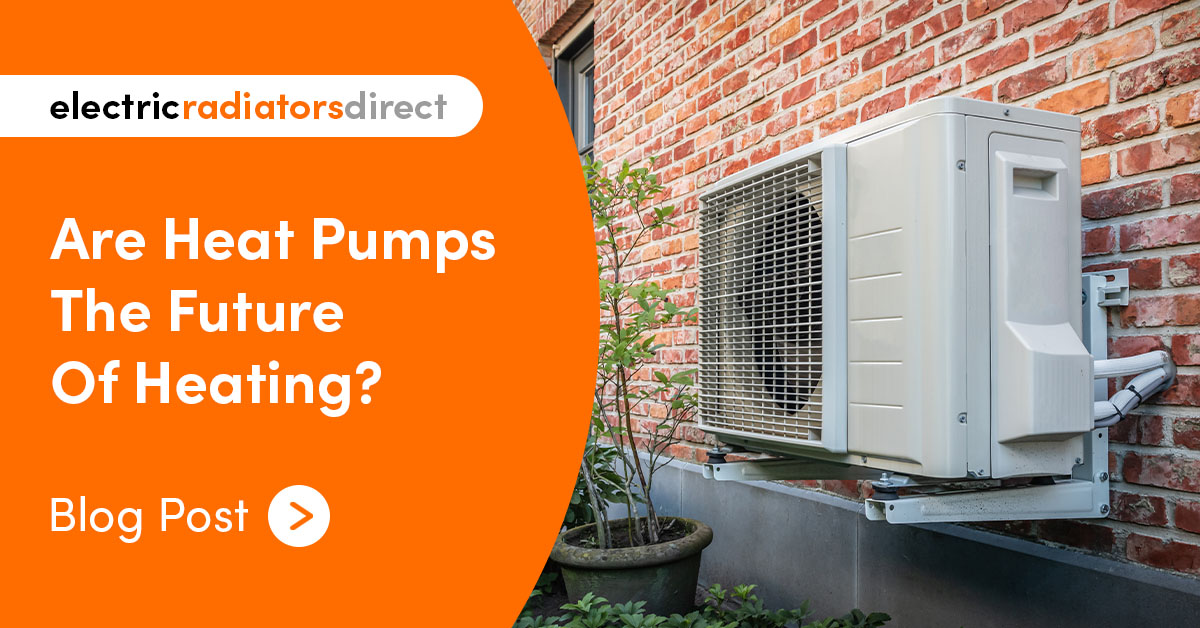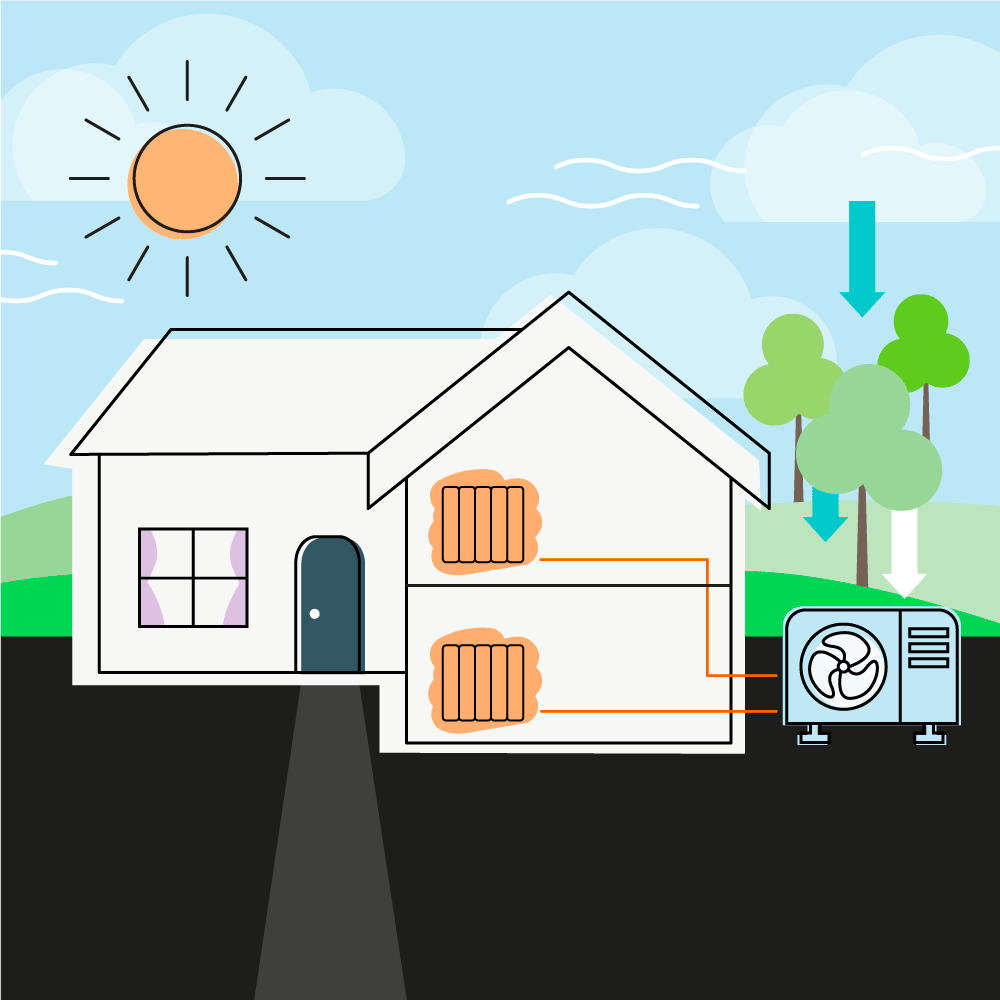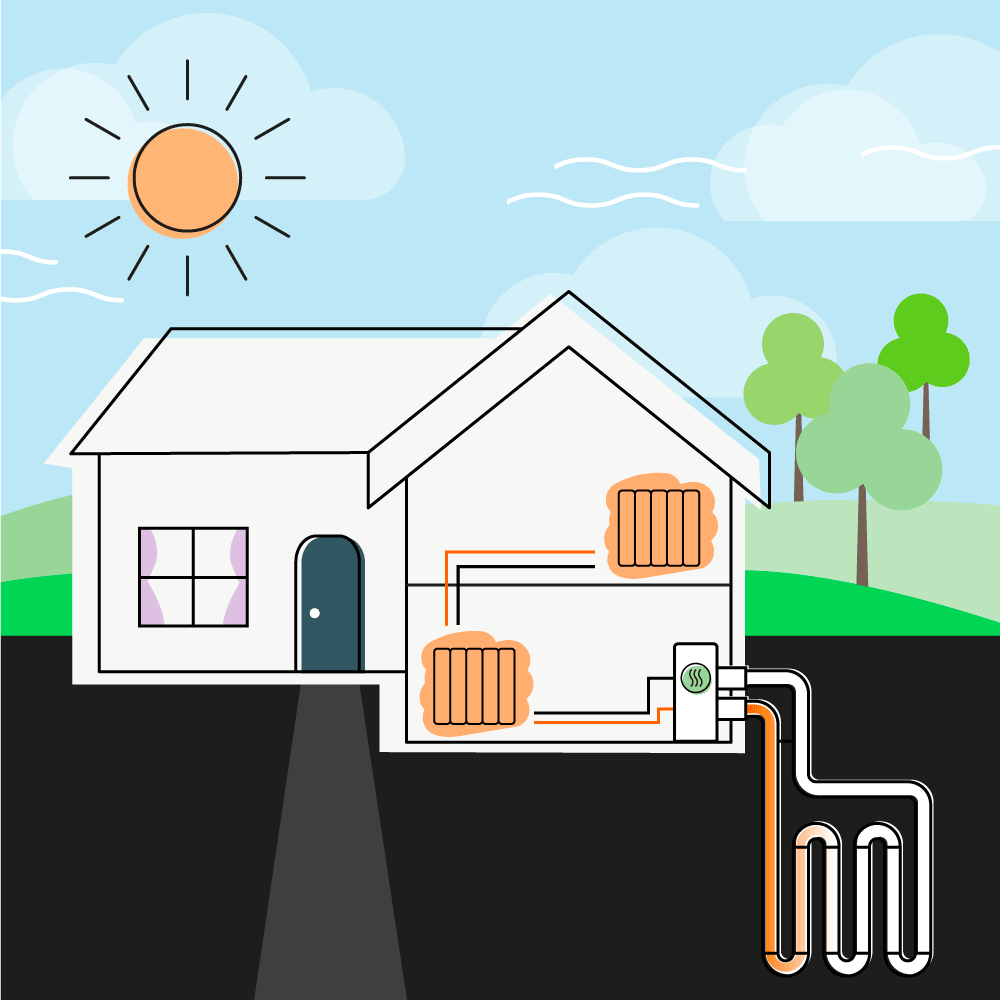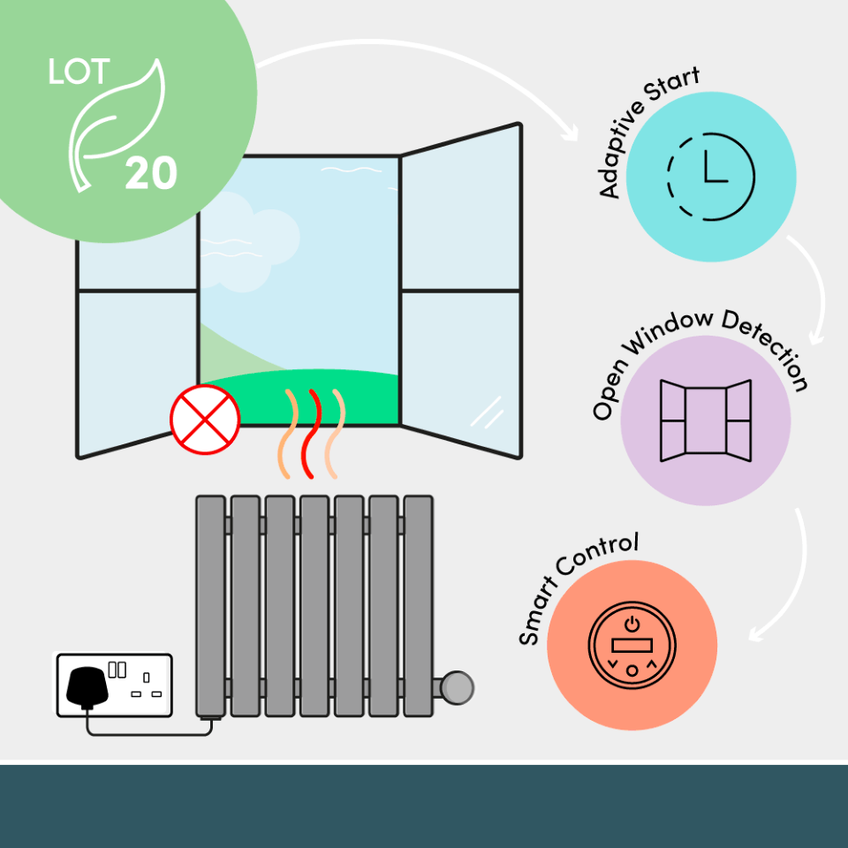

Last updated: February 2023
Making small changes towards an eco-conscious lifestyle is something most of us are in the habit of. Whether it’s remembering a reusable coffee cup when popping to your favourite cafe, cutting back on meat and dairy consumption, or simply walking that 20-minute commute. However, in the wake of COP26 and the sharp rise in gas bills many households saw during October, you may be looking to make a firmer commitment to a greener future by changing the way you heat your home. One carbon-conscious heating solution that helps to both reduce pollution and energy consumption may sound too good to be true, but for the right household, a heat pump could be the answer.
What exactly are heat pumps?
Heat pumps work very similarly to fridges, just in reverse. Instead of making the inside cooler and the outside warmer, they take the heat from outside a property, either from the surrounding ground or the air, and transfer it indoors. There are two main types of heat pump - air source and ground source.
Heat pumps: what are they, how do they work, and crucially, are they any good? We’re here to run down the highs and lows of this relatively new carbon-free heating solution.


Air Source Heat Pumps
Air source heat pumps pull energy from the air outside and convert it into warmth through a unit fitted onto the outside wall of a house. Air is drawn in by a fan and passed over a set of coils, which is then compressed to generate heat of around 60°C. This is then used to heat the water, radiators and underfloor heating systems inside a house.
They are designed to release heat slowly and steadily - keeping houses at a more stable ambient temperature rather than the quick hit of heat a gas boiler offers. As radiator temperatures are lower when powered by a heat pump, your existing ones may need to be replaced for larger ones so that they can produce the same amount of heat.


Ground Source Heat Pumps
Ground source heat pumps work in a similar way, except this time energy is extracted from the valuable solar energy stored under our feet. A continuous loop of pipework is buried underground, containing refrigerant fluid, which heats up and supplies warmth to your home.
A large amount of outdoor space is usually required to house the pipe network of a ground source heat pump – generally around twice the amount of floorspace of the home itself, so it might not be suitable for every household. As with air source heat pumps, they also provide a slow release of heat, so may need larger radiators.
So, are heat pumps the future?
| The good stuff | The drawbacks |
|
They are highly efficient - for every unit of electricity used by the pump, three units of heat are generated. |
They are expensive. Typically, heat pumps cost around £10,000 to install, and maybe more when you factor in maintenance costs. Ground source pumps can be closer to £20,000. |
|
They can also be used to cool the house down in warmer months. |
Heat pumps generate less heat compared to other heating solutions. |
|
They can dramatically lower your greenhouse gas footprint - by a substantial 50-60%. |
The fan and compressor could be noisy, especially over time. |
|
When fitted correctly in a well-insulated home, their performance shouldn’t be affected by cold weather. In fact, heat pumps are the most fitted heating device in Sweden. |
For heat pumps to work at their most effective, the house needs to be well insulated - if not, their efficacy is lower. |
|
Both air and ground source heat pumps qualify for the Renewable Heat Incentive (RHI), which pays out £6,000 over seven years to help compensate that initial financial hit. |
Bills may not be noticeably cheaper - it’s unlikely you will make jaw-dropping savings unless your current system is oil-fired or your house is very well-insulated. |
|
|
The installation process can be disruptive, particularly ground source installation due to the amount of digging required. |
The verdict
Although here, the list of cons outweighs the pros, whether heat pumps are the future is highly situation-dependent. If you live in a modern home with effective window, wall and roof insulation, as well as a large garden, a heat pump might just be your ideal heating solution. Unfortunately, the reality is, most of the population does not fit into that mould. The steep upfront cost alone is likely to be a deterrent for many households - even despite the RHI, the initial cost of an air source heat pump could finance a new gas boiler a few times over, regardless of whether it will save money long-term.
Electric heating: an alternative solution


But it’s not all doom and gloom. There are various other renewable energy sources to consider, such as electric heating. Efficient and intuitive, electric offers an effective way to heat any home. These appliances combine comfortable and lasting warmth with sophisticated control, for heating you can always rely on. Whether you opt for an infrared panel, electric radiator or outdoor patio heater, there’s something for every space. Plus, with price points to suit a variety of budgets, a range of designs to choose from and easy DIY installation available, electric heaters make a great alternative to other solutions on the market.
From fast-acting and effective warmth to zero maintenance, check out this video to learn why electric radiators are taking UK homes by storm.
Shop your eco-friendly electric heater today
In short, heat pumps aren’t perfect for everyone. In the right home, they can work incredibly well, and they certainly have a place on the stage when it comes to the future of eco-friendly heating. However, with cheaper and easier to install products available, such as infrared panels and electric radiators, heat pumps will certainly be sharing the spotlight.
Key learnings
- Air source heat pumps are versatile when it comes to installation possibility, but with a lower heat supply (particularly during cold weather) they’ll most likely need to work alongside another heating system.
- Ground source heat pumps are extremely efficient, but with such high upfront costs and complicated installation, they’re not suitable for the average UK household.
- Electric heating systems like electric radiators and infrared panels can be installed alongside an existing heating system, so the switch to a low-carbon alternative doesn’t have to be an immediate process.
- Plus, with price points to suit a variety of budgets, a range of designs to choose from and easy DIY installation available, electric heaters make a great alternative to other solutions on the market.





